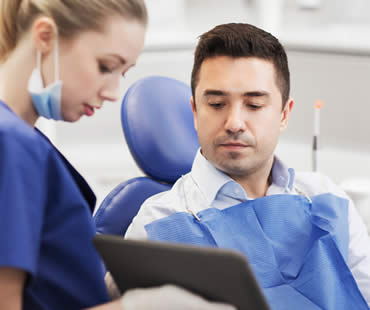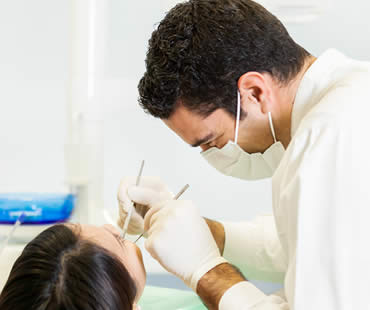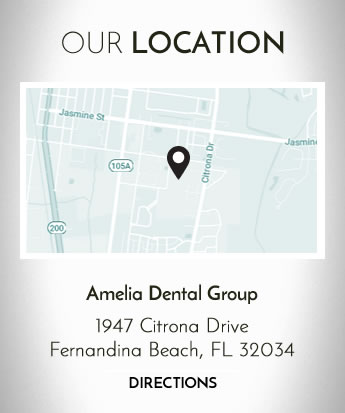
One of the most misunderstood procedures in dentistry is root canal treatment. If your dentist recommends this procedure, you might be quick to turn to the internet or other sources to learn about it. Unfortunately there is a lot of unreliable information out there, which can scare you away from needed treatment.
There are some common myths that circulate about root canal therapy. Instead of avoiding treatment, learn the truth about this procedure that may be the most effective way to save a damaged tooth.
Myth: Root canal treatment is very painful.
Truth: This procedure often serves to relieve pain instead of creating it. With the anesthetics and sedation dentistry available today, in most cases the procedure feels like simply getting a filling.
Myth: You don’t need root canal treatment unless you are experiencing severe tooth pain.
Fact: Pain is not always present when root canal therapy is advised by your dentist. A tooth that has died may no longer trigger pain, but treatment is necessary to eliminate infection and save the tooth. Diagnostic tests are available to help your dentist diagnose tooth problems even when pain is not present.
Myth: The benefits of root canal treatment are short-lived.
Fact: This treatment provides durable and long-lasting results, potentially for a lifetime. Since the tooth is usually topped with a crown, it can be protected indefinitely.
Myth: Root canal treatment causes illnesses.
Fact: This is one of the most common misconceptions you might run across on the internet. Based on very old research that has been proven to be wrong, the myth still exists that root canal therapy might cause various diseases. Instead, root canal treatment is safe and only improves your oral and overall health.
Myth: Tooth extraction is an adequate alternative to root canal therapy.
Fact: Dentists agree that saving your natural tooth is almost always preferred over a traumatic procedure like tooth extraction. The benefits of keeping your restored real tooth are better than having a hole in your smile or requiring tooth replacement solutions.
Schedule your appointment at our Fernandina Beach dental office

Have you always disliked your smile? Did childhood school pictures find you smiling closed-lipped and tense? Did you spend your teens fearful of making personal connections? As you aged, did you find yourself facing more and more mounting oral difficulties? Dental problems are difficult enough to deal with when it’s just one or two cavities or a problem remembering to floss, but when you’re dealing with a lifetime of bad oral health, it can become so much more.
Often, those who need the most professional oral care are those who avoid it completely. Many have had negative experiences in the dental chair as children, or are fearful of the pain or process that is necessary to makeover a smile that’s been unattractive and unhealthy for most of the patient’s life. These patients sometimes avoid professional care because of shame and embarrassment, fearful that the dentist is going to judge them.
Smiles go bad for many, many reasons, some of which are completely out of the patient’s control. Poor nutrition growing up because of a lack of money or parental education can be a large factor. Some medicines, if taken during childhood, can cause adult teeth to degrade, and there are many genetic factors that can be passed on to a child that leads to extremely poor quality teeth. If this sounds like you, don’t let shame in your situation keep you from getting the smile you always wanted.
Find a skilled cosmetic dentist in Fernandina Beach and schedule a consultation. Nothing has to be done at this first meeting, it’s just talking to the dentist. If that dentist isn’t helpful and supportive, get up and walk out and find yourself another dentist. The majority of cosmetic dentists understand the backgrounds that can lead to poor oral care. It can have nothing to do with how much you brush or floss, but everything to do with your history.
You deserve to have the smile you’ve dreamed of all your life. Don’t let fear or shame hold you back. Work with your cosmetic dentist to make a plan, and take the first steps you need to completely makeover your smile!

The importance of having a family dentist who can take care of every family member’s oral health needs can’t be emphasized enough. You can prevent cavities, gum disease, and even tooth loss by visiting your family dentist regularly. Not only that, your overall health and your appearance will also benefit.
Better oral health:
Regular examinations by your family dentist will check for problems like tooth decay and cavities. Gum disease is another oral health issue that your dentist will look for, so that it can be detected and treated early. Dental problems are much easier to handle when they are caught early, before they can advance to more serious stages which may even mean tooth loss. Your teeth will also have a thorough professional cleaning at dental visits, getting rid of unhealthy plaque and tartar. Children can begin visiting the family dentist around the first birthday, and checkups should continue throughout life.
Improved appearance:
In additional to advantages for your oral health, your smile will look more appealing when you maintain regular family dental visits. Your teeth will be in the best condition possible when you have examinations and cleanings as recommended. If you are interested in further treatment that your family dentist doesn’t specialize in, you may be referred to a cosmetic dentist or orthodontist.
Enhanced overall health:
You may not realize it, but seeing a family dentist does more than protect your teeth. Your overall health will be improved when you care for your oral health. Gum disease has been linked to health problems like heart disease, diabetes, strokes, and pregnancy complications. So your risk for these serious health problems may be decreased with regular visits to your family dentist. Another health problem that dental checkups can catch is oral cancer. Most dentists perform routine oral cancer screenings during examinations, so that your chances for recovery are much greater with early detection and treatment.
Schedule your appointment at our Fernandina Beach dental office

Wisdom teeth are the last adult teeth to erupt into the mouth, generally emerging between the ages of seventeen and twenty-one. They are the third set of molars and are in pairs: two each on the top and bottom arch of teeth. While some patients don’t have wisdom teeth, most do. Many of those who do have them don’t have enough room for those teeth to erupt fully, causing them to be wedged under the back of another tooth, impacted in the gum.
Impacted wisdom teeth are very difficult to clean, and can negatively affect the surrounding teeth. They are highly vulnerable to disease and decay and may lead to tooth pain and damage to adjacent teeth. For these and other reasons, a dentist may recommend that the teeth be extracted through oral surgery as soon as necessary to prevent any problems.
Extraction of wisdom teeth is typically an outpatient procedure done in an oral surgeon’s office. A healthy patient can proceed with a typical surgery, but if any infection is detected, the surgery can’t move forward until the infection is cleared up through the use of a full course of antibiotics. Once the surgery is moving forward, the surgeon’s team will administer some form of anesthesia to numb the area surrounding the tooth or to possibly sedate the patient through IV sedation dentistry.
After the anesthesia has fully taken effect, the surgeon makes an incision to open the gum and to remove any bone that is blocking the tooth from extraction. The tissue connecting the bone to the tooth will be separated and the tooth will be removed. In some cases, the surgeon will have to break the tooth into smaller pieces to make it easier to remove. After thoroughly cleaning the area and removing any remaining debris, the incision will be closed, stitched and packed with sterile cotton gauze to staunch any bleeding.
The surgeon will provide aftercare instructions. Patients should follow these instructions to the letter in order to ensure the best and fastest healing of the surgical site.
We look forward to seeing you in our Fernandina Beach dental office

A special area of dentistry has been formed that focuses on making your smile as flawless and appealing as possible. Cosmetic dentistry corrects imperfections that cause people to feel insecure and unhappy with their smiles. If you are one of those people, maybe it’s time to see a cosmetic dentist to give you back your smile and confidence. Here are some of the most common reasons for visiting a cosmetic dentist.
One of the biggest complaints that people have about their smile is the color of their teeth. Stains can cause your teeth to become yellow or brown with time, making your smile unattractive and embarrassing. Cosmetic dentists offer teeth whitening techniques that brighten your teeth, and can restore your pearly whites in just one appointment.
Gaps in your smile from missing teeth not only look awkward, they also make chewing and speaking more difficult. A cosmetic dentist can replace your missing teeth with dental implants, bridges, or dentures. Implants have become increasingly popular because they provide a permanent, comfortable, and natural-looking solution for missing teeth.
Cosmetic dentists can solve a variety of other imperfections that make you unhappy with your smile. Veneers improve the shape and color of your teeth by covering the fronts of your teeth with thin shells. Dental fillings and root canals resolve problems often linked to tooth decay. Crowns are used to cover an unhealthy tooth and restore its strength, shape, size, and appearance. They also may be used in conjunction with dental bridges to correct gaps in your smile.
There is no reason to go through life ashamed of your teeth. Make an appointment with a cosmetic dentist to see how your smile can be improved to get the bright, beautiful smile you desire.
Contact us today to schedule your cosmetic dentistry consultation in our Fernandina Beach dental office.

Pregnancy brings many kinds of excitement and joy to a mother’s life, but gum problems aren’t one of them. Pregnancy gingivitis not only causes gum trouble, it can also lead to higher risks for preterm labor and problems with the newborn baby. If you are pregnant and notice swelling or inflammation of your gums, you might have pregnancy gingivitis. It results from plaque buildup that irritates your gums, and can harbor bacteria that gets into your body. The bacteria can travel to your uterus and affect your pregnancy and unborn child. How can you avoid pregnancy gingivitis?
Oral hygiene
Brush and floss your teeth properly. Try to brush after all meals and snacks, especially those high in sugars or starches. See your dentist for frequent cleanings, aiming for two to three times during your pregnancy. This will remove more plaque from your teeth that you can at home, serving to lower your risk for plaque buildup.
Education
Consult your dentist before, during, and after your pregnancy. You will learn how to best care for your mouth, and what to watch for in case a problem does arise.
Nutrition
Maintaining a healthy diet during pregnancy will not only benefit your overall health and that of the baby, but will also limit your sugar intake which promotes plaque formation.
Dental care
Try to have dental procedures performed before you become pregnant. Some emergency procedures are safe during pregnancy, but it is best to have treatment done before pregnancy.
Bacteria control
Avoid sharing food and utensils so that you don’t transfer bacteria from person to person. Your goal is to limit the amount of bacteria in your mouth as much as possible.
Xylitol gum
Chewing sugarless gum promotes saliva, which help equalize the acids in your mouth and fight plaque buildup. The ingredient xylitol has been shown to help prevent bacteria from being able to stick on your teeth, therefore fighting tooth decay.
If you need a dentist in Fernandina Beach contact us today







